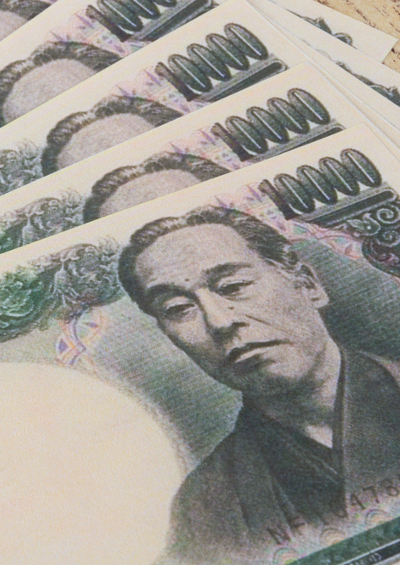Japan: A Venetian Destiny?
Japan and Venice share a similar history, but Japan should change course before that history repeats itself.
June 11, 2014

In the Middle Ages, Venice was possibly the richest place on earth. But today, it is a mere museum, a shadow of its former self. Could the same Venetian destiny await Japan?
▪ Also: The Globalist’s
Venice, a nation of seafarers, was able to take advantage of its pivotal position in the European economy and the expansion of trade from the 9th century onward. Its population rose from 45,000 people in the year 1050 to some 110,000 by 1330. Back then, it was as big as Paris — and probably three times the size of London.
In the period following the Second World War, Japan enjoyed a similarly stunning rise as a global exporting giant. At one point, unimaginable now, it seemed to threaten the United States’ leading position in the global economy.
Venice’s rise
Venice’s rapid expansion was driven by the world’s “most advanced set of inclusive economic institutions underpinned by nascent political inclusiveness,” as Daron Acemoglu and James A. Robinson argue in their celebrated book, Why Nations Fail.
Contractual innovations like the “commenda,” a rudimentary type of joint stock company, was a key channel for economic dynamism and social mobility alike. This saw the rise of new families as centers of economic power which, in turn, forced the political system to become more open.
The “Doge,” who governed Venice, saw his power diminish, and became ultimately subservient to the Great Council.
This period also brought institutional innovations in law, including independent magistrates, private contract and bankruptcy laws, as well as new legal business forms and new types of contracts.
There was rapid financial innovation and the beginnings of modern banking. Not surprisingly, all of this led to a rapid expansion in Venice’s mercantile and naval power.
Inclusiveness promotes growth
Japan’s postwar rise was also driven by inclusive economic and social policies. These were implemented on the back of a thin layer of democracy, dominated by the Liberal Democratic Party.
Still, Japan’s government provided a good education to its citizens. It also fostered the rise of world-beating companies such as Toyota and Sony. These firms provided secure employment to workers as well as steady business to small and medium enterprises.
Closed shops and decline
The Venetian success story came unstuck as the rise of new families threatened the situation of the established elite families.
These elite families managed to force through a decision to close access to the Great Council and ban use of the commenda. With trade now controlled by a narrow group of elite families, Venice was declining.
Today, it survives on plenty of tourism and a bit of fishing.
Despite Japan’s veneer of “inclusiveness,” its system was engineered by an oligarchic elite from business and government.
And this is at the root of Japan’s current problems, which began when a financial crisis struck over two decades ago. It didn’t help matters that it superimposed itself on an unfolding demographic drama.
The possible renewal of the economy through “creative destruction” was suppressed. Old companies were kept afloat, and bureaucratic barriers and a closed financial system inhibited the entry of new companies.
Japan’s self-defeatism
To revive their fortunes, Japanese companies — once the strongest element of Japanese society — have increasingly made their future in overseas markets more than at home.
The Japanese government provides widespread support to overseas investment by Japanese corporations. And yet, it strangely blocks inward foreign investment, even though that is a potentially great source of domestic economic dynamism and innovation.
Japan’s agriculture and services sectors are similarly protected from imports. As a consequence, they are saddled with low productivity.
To maximize their flexibility and competitiveness, Japanese companies now employ some 40% of their workers on “irregular” contracts (part-time, short-term or contract workers). This large segment of the workforce has virtually no job security or access to social benefits.
Workers also have less access to corporate training and suffer from the precariousness of their situation.
This surely has a negative impact on productivity. But Japanese companies, like companies everywhere, are more concerned with short-term profits than the longer term.
The silver shackles of debt
No wonder then that inequality and poverty — which in turn weaken Japan’s domestic demand even further — are on the rise. Public spending, rather than new entrepreneurship, has been the government’s strategy for keeping the economy afloat.
Newly-born Japanese citizens now arrive in the world with a veritable millstone around their necks — government debt to the tune of more than 200% of GDP.
This growing debt is also being fed by the health care and pension costs of Japan’s rapidly aging population. And given Japan’s demographic structures, this is bound to worsen. In essence, Japan’s seniors — a very large cohort of the population — are now part of what Acemoglu and Robinson call the nation’s extractive elite.
Under these circumstances, it is perhaps not surprising that the government has chosen to invest much less in family-friendly policies for the young.
This is as regrettable as it is shortsighted because such policies might encourage a higher birth rate and help arrest the decline in its population. Nor has the Japanese government helped its cause by assiduously failing to foster more positive attitudes towards migration.
Abenomics, the latest gadget
Abenomics is Japan’s newest policy gadget which promises to revive the country’s fortunes. But so far, it has been much more talk than action — especially when it comes to emancipating women in Japan’s male-dominated society.
One can also rest assured that old corporate elites are likely the principal beneficiaries of labor market and other reforms in soon-to-be established special economic zones, one of the key initiatives of Abenomics.
The Venice and Japan analogy may not be perfect. But they are both cases where “extractive elites” hollowed out their own nation’s path to a successful future.
In Venice then and in Japan now, elites dominated society and politics and managed to use their powerful position to extract benefits for themselves.
That is the opposite of what should be happening. Japan needs a stronger focus on building an inclusive and stronger society and economy where all can contribute — and where we are all exposed to positive force of competition.
As Japanese and other tourists visit the beautiful piazzas and canals of Venice, they probably don’t think of it as a monument to disastrous political management. Nor do they probably imagine that the same fate could await their own countries.
But history — and the excellent analysis of Acemoglu and Robinson — demonstrates that nations can and do fail, and that such failure is invariably the result of choices made by “extractive elites.”
Takeaways
What do Japan and Venice have in common? Their rise to power and, if nothing changes, their fall from grace.
Japan and Venice share a similar history, but Japan should change course before that history repeats itself.
Japanese companies, like companies everywhere, are more concerned with short-term profits than the longer term.
Newly born Japanese citizens arrive in the world with a millstone made of government debt around their necks.
Despite Japan's veneer of "inclusiveness", its system was engineered by an oligarchic elite.
Public spending, rather than entrepreneurship, has been the government's strategy for keeping the economy afloat.

